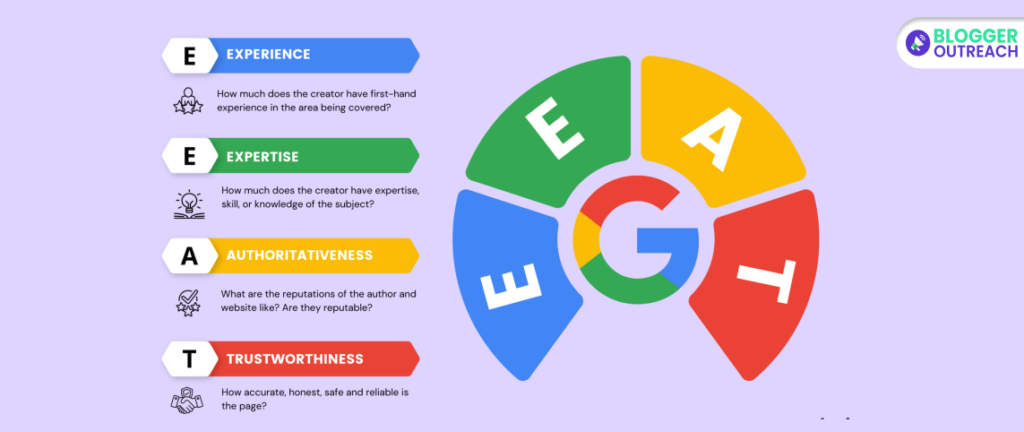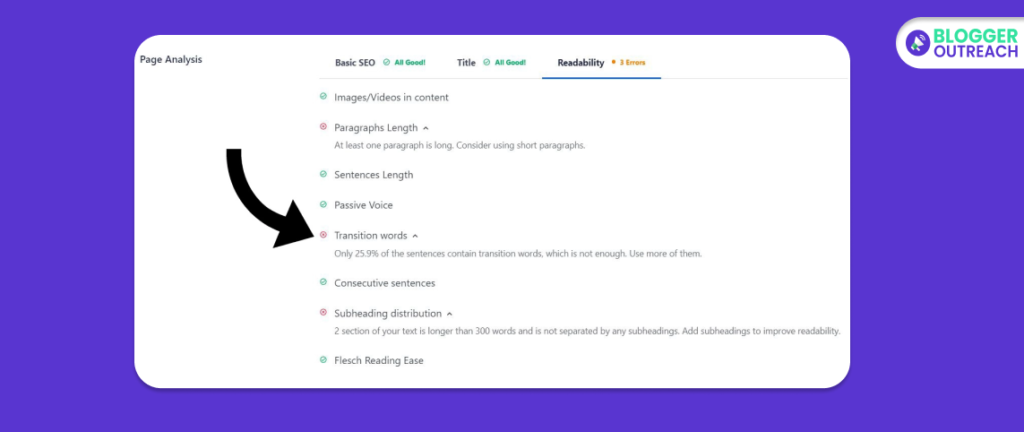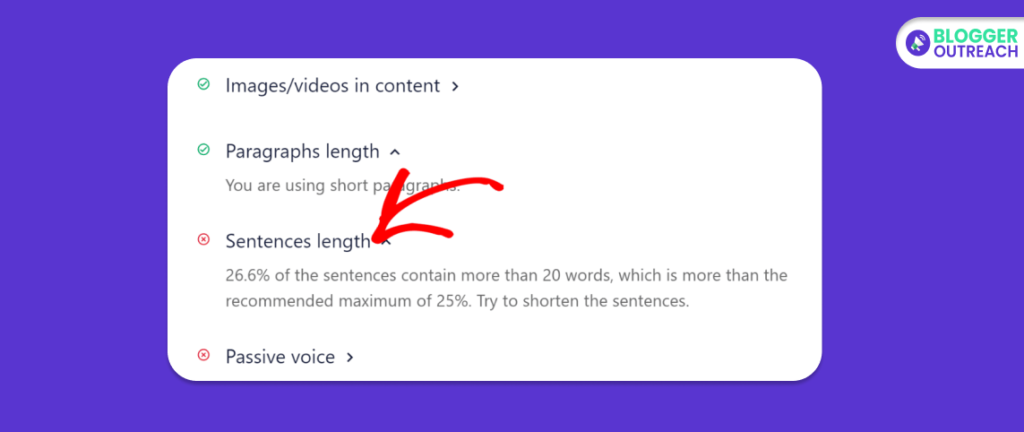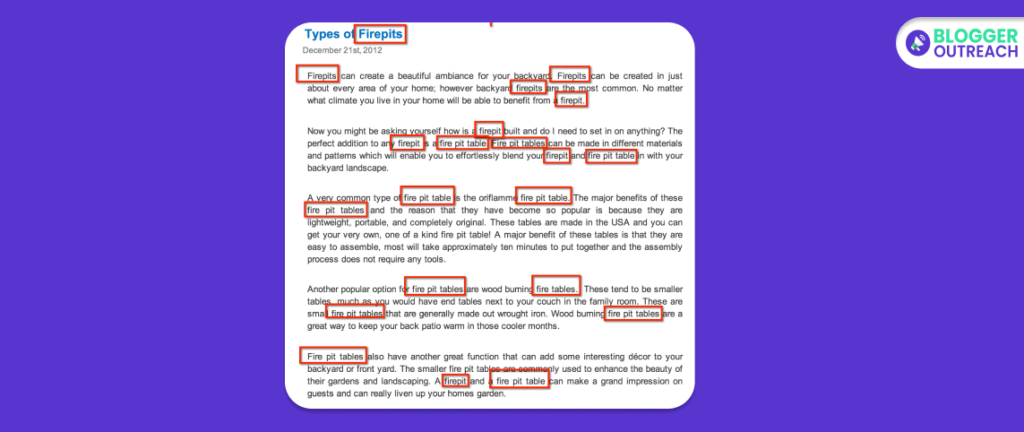Content can either break you or pave your SEO journey. Yes, you read that right!
We do not know how often we say that content is the ultimate game changer. However, it breaks our hearts when we see people are still making mistakes with SEO content.
With folded hands, we are requesting you not to make content-related mistakes. Being experts, we are here for a longer period of time. We identified that there are certain areas where most people stumble.
You will see an overall change in ranking, traffic, branding, and leads when you stop making these mistakes.
How do we refrain from these content SEO problems?
So, let’s start.
Click Here To Know About Landing Page SEO
Table Of Content
Get Rid Of These 10 Most Common SEO Mistakes
Many individuals often commit errors when creating SEO content. Let us list down the 10 most common mistakes for you.
Common SEO Mistakes #1 – Ignoring User Intent: Failing To Address What Users Are Searching For

User intent, often referred to as search intent, is the fundamental reason behind a user’s online search query.
There Are Generally Four Primary Types Of User Intent:
- Informational Intent: Users seek information or answers to questions. They’re looking for content that educates or informs.
- Navigational Intent: Users want to navigate to a specific website or web page. They’re searching for a particular brand, product, or service.
- Transactional Intent: Users are ready to make a purchase or take a specific action, such as signing up for a newsletter or downloading a resource.
- Commercial Investigation Intent: Users are in the research phase, comparing products or services before making a decision.
Creating content that doesn’t align with the user’s intent is like offering coffee to a tea person. This can lead to a mismatch between what users expect to find and what your content delivers. In turn, you will see high bounce rates and poor rankings.
For example, if a user searches for “best budget smartphones,” they have transactional intent—they are likely looking to purchase a smartphone. If your content, instead, provides a list of smartphone reviews without clear buying recommendations or links to purchase options, you’ve missed the mark.
How To Avoid Ignoring User Intent? Adopt User-Centric Approach
Keep the user at the forefront of your content creation process. Address their needs, questions, and pain points. Make it informative and relevant.
Craft engaging and informative content that answers the user’s query and goes above and beyond. Provide value that keeps users on your page.
2. Common SEO Mistakes #2 – Neglecting Experience, Expertise, Authoritativeness, And Trustworthiness Impacts Rankings

Well, let’s move on to the next common SEO mistake. In 2023, EEAT holds unparalleled significance, with firsthand knowledge being the ace. However, most people are not going by EEAT. They end up getting results that are not upto the mark.
Personalized, knowledge-backed expertise attracts both search engines and readers. Okay, let’s dive into this critical error.
Understanding EEAT
- Experience: Demonstrating practical experience in your niche enhances your content’s credibility and relevance.
- Expertise: Being an authority on a subject matter bolsters your content’s trustworthiness and persuasiveness.
- Authoritativeness: Establishing your brand or yourself as an industry authority strengthens your content’s impact.
- Trustworthiness: Gaining readers’ trust through reliable, accurate, and transparent information is pivotal.
Here is an example from Google:
“For example, if you’re looking for information on how to correctly fill out your tax returns, that’s probably a situation where you want to see content produced by an expert in the field of accounting.
But if you’re looking for reviews of a tax preparation software, you might be looking for a different kind of information—maybe it’s a forum discussion from people who have experience with different services.”
The Mistake: Neglecting EEAT
Overlooking EEAT can lead to poor rankings and reduced user trust. For instance, a health blog lacking medical expertise may harm readers with inaccurate advice, damaging trust and SEO.
How To Avoid EEAT Oversight
To rectify this SEO writing mistake and boost your content’s performance:
- Prioritize knowledge. Infuse your content with firsthand knowledge and personal experience.
- Demonstrate your authority. Showcase your expertise through well-researched and insightful content.
- Cite Sources. Back your claims with credible sources, elevating your content’s trustworthiness.
- Build a strong reputation. Enhance your authoritativeness by gaining recognition within your industry or niche.
- Consistency is key. Maintain a consistent level of EEAT across your website for long-term SEO success.
3. Common SEO Mistakes #3 – Poorly Structured Content: Disorganized Content Confuses Both Readers And Search Engines

When your content lacks organization, it confuses both readers and search engines. Let’s dive deep into this common SEO mistake.
The Impact Of Poorly Structured Content
Disorganized content can overwhelm readers, making it challenging for them to find the information they seek. This often results in high bounce rates and decreased user engagement.
Additionally, search engines rely on clear content structure to understand the context and relevance of your content. When your content lacks organization, it may not rank as well in search results.
Common Mistakes In Content Structure
Lack of Hierarchy. Failing to use headings and subheadings to create a clear hierarchy in your content can make it appear chaotic and difficult to follow.
Inadequate Formatting. Long paragraphs without breaks, excessive use of bold or italics, and inconsistent formatting can make your content appear cluttered.
No Flow or Logical Sequence. Content that jumps from one topic to another without a logical sequence can confuse readers and disrupt the overall message.
How to Improve Content Structure
To avoid the common SEO mistake of poorly structured content, follow these guidelines:
Organize your content with clear and descriptive headings. This improves readability and helps search engines understand your content’s structure.
Ensure that your content flows logically from one point to the next. Use transition words to guide readers through your content.
Keep paragraphs concise and use bullet points or numbered lists for lists of information. This enhances visual appeal and readability.
Incorporate relevant images, infographics, and videos to break up text and provide visual context.
Use internal links to connect related content on your website, making it easier for readers to navigate and explore.
Incorporate your focus keyword naturally within headings and throughout the content, but avoid keyword stuffing.
4. Common SEO Mistakes #4 – Insufficient Transition Words: Neglecting Transitional Phrases Disrupts Content Flow

Well, the next common SEO mistake is related to transition words.
Transition words are like the glue that holds your content together. They serve several crucial purposes:
So, neglecting transitional phrases can disrupt your content’s flow…
…affecting reader engagement and SEO performance.
Enhanced Readability: Transition words create a smooth and coherent flow, making it easier for readers to follow your content.
Improved Comprehension: They help clarify the relationships between ideas, allowing readers to connect the dots.
SEO Benefits: Search engines appreciate well-structured content with good readability, potentially boosting your rankings.
Now, Let’s Shed Light On The Common SEO Writing Mistake: Insufficient Transition Words
When you fail to use enough transition words, your content can feel disjointed and challenging to read. It can also harm your SEO efforts, as search engines may interpret it as less user-friendly.
How To Address Insufficient Transition Words
To rectify this common SEO mistake and create content that flows seamlessly:
- Identify Key Points. Before writing, outline your content’s main ideas and their relationships.
- Select Appropriate Transitions. Choose transition words that best suit the context. Common examples include “however,” “therefore,” “in addition,” and “furthermore.”
- Use Them Naturally. Incorporate transition words where they naturally fit, connecting sentences and paragraphs.
- Vary Your Choices. Don’t overuse the same transition word repeatedly. Diversify your vocabulary to maintain reader interest.
- Read Aloud. After writing, read your content aloud to ensure that the transitions feel seamless and logical.
- Harness The Power Of Tools. If you use the Yoast SEO plugin, aim for at least 30% of your sentences to contain transition words to earn a green bullet and improve your content’s SEO potential.
5. Common SEO Mistakes #5 – Lengthy Sentences Over 20 Words: Excessive Sentence Length Hinders Readability

Such excessive sentence length can significantly hinder the readability of your content, leading to disengaged readers. So, avoid this biggest SEO mistake.
The Importance of Concise Sentence Structure
Concise sentence structure holds the key to better content quality.
Long sentences can overwhelm readers and disrupt the natural flow of your content. They may discourage readers from continuing and negatively impact your SEO efforts. Plus, longer sentences are boring.
In the age of lower attention span, you must avoid this mistake.
Here Is How:
- Identify Lengthy Sentences: During editing, pinpoint sentences exceeding 20 words.
- Break Them Up: Divide lengthy sentences into shorter, more manageable ones, each conveying a single idea or point.
- Use Simpler Language: Opt for straightforward language over complex jargon or convoluted expressions.
- Vary Sentence Length: While shorter sentences are preferable, vary sentence length to maintain a natural writing rhythm.
- Read Aloud: After editing, read your content aloud to ensure it flows smoothly and is easily understood.
(i) Long Sentence (over 20 words): “The readability and user-friendliness of digital marketing and SEO content writing is crucial, as this greatly impacts the user experience and engagement levels on their websites, which in turn affects their online visibility and search engine rankings.”
(ii) Short Sentence (around 12 words): “In digital marketing, content readability directly impacts user engagement and search engine rankings.”
The Shorter Sentence Is Easier To Read For Several Reasons:
- It comes with clarity. Readers can easily grasp the information.
- Easier for readers to process the information.
- Shorter sentences create a faster reading pace.
- Simplicity reduces the chances of confusion or misinterpretation.
- Readers are more likely to remember and retain information from shorter sentences because they are less mentally taxing.
6. Common SEO Mistakes #6 – Passive Voice Problems: Passive Voice Can Make Content Less Engaging

The misuse of passive voice can adversely affect the engagement levels of your content. Experts consider it one of the most common SEO mistakes.
Passive voice occurs when the subject of a sentence is acted upon rather than performing the action. This often results in wordy and less engaging sentences.
For Example:
- Passive Voice: “The author wrote the blog post.”
- Active Voice: “The author wrote the blog post.”
The Mistake: Passive Voice Hinders Engagement
The Overuse Of passive Voice Can Lead To Several Issues In Your Content
- Reduced Clarity: Passive sentences can be less clear and direct, making it harder for readers to understand your message.
- Wordiness: Passive voice often results in longer sentences, which can be cumbersome and less engaging.
- Lack Of Accountability: Passive sentences may lack a clear subject, reducing the sense of accountability in your writing.
So, How To Avoid Passive Voice Problems
To rectify this SEO content writing mistake and create more engaging content:
- Identify Passive Voice: During editing, look for sentences where the subject is being acted upon.
- Restructure Sentences: Rewrite passive sentences into active ones, where the subject performs the action. This often leads to more concise and engaging sentences.
- Focus On Clarity: Prioritize clarity and directness in your writing. Ensure that the subject of your sentences is clear and that the action is easy to identify.
- Read Aloud: After editing, read your content aloud to check for sentence fluency and engagement.
- Incorporate Active Voice Naturally: Seamlessly incorporate your focus keyword, “common SEO mistake,” into active sentences to maintain SEO relevance while rewriting.
7. Common SEO Mistakes #7 – Unremarkable Titles: Titles That Don’t Grab Attention Won’t Entice Clicks

Titles are the first point of contact between your content and potential readers.
Unremarkable titles are those that lack intrigue, curiosity, or a clear value proposition for the reader. These titles may be too generic, bland, or fail to convey the essence of the content they represent.
This common SEO mistake results in lower click-through rates (CTR) and reduced visibility in search engine results.
Now The Question Is – How To Avoid Unremarkable Titles?
- Ensure that your title aligns with your content’s focus keyword and topic. This helps improve search engine visibility.
- Next, Incorporate power words that evoke emotion, curiosity, or urgency. Examples include “essential,” “proven,” “effective,” and “exclusive.”
- Ask questions in your titles to engage readers and pique their interest. Questions stimulate curiosity and encourage clicks.
- Clearly convey the benefits or value of your content in the title. Let readers know what they will gain by clicking.
- Limit your title to a reasonable length, ideally under 60 characters, to ensure it displays fully in search results and is not cut off.
- Experiment with different title styles and analyze their CTR performance to understand what resonates with your audience.
- To maintain SEO relevance, include your focus keyword, such as “common SEO mistake,” in your title.
8. Common SEO Mistakes #8 – Duplicate Content: Reusing Content Can Result In SEO Penalties And Confusion

Duplicate content refers to identical or substantially similar content appearing on multiple web pages. It can be either within the same website or across different websites. This can happen unintentionally or as a result of content syndication, posing several issues.
Using Duplicate Content Can Result In The Following Problems:
- SEO Penalties: Search engines may penalize websites with duplicate content by reducing their rankings in search results. This can harm organic traffic and visibility.
- Confusion: Readers encountering the same content on different pages or websites may become confused and lose trust in the source.
- Difficulties in Crawling: Search engine bots have limited resources for crawling and indexing content. Duplicate content can lead to inefficient resource allocation.
How To Avoid Duplicate Content Mistakes
To steer clear of the SEO pitfalls associated with duplicate content:
- Originality Is Key: Create unique content for each page or website. Avoid copying and pasting from other sources.
- Canonical Tags: Implement canonical tags to indicate the preferred version of a page when similar content exists elsewhere on your site.
- 301 Redirects: If you’ve consolidated or moved content, use 301 redirects to guide users and search engines to the new location.
- Syndication Guidelines: If you syndicate content, ensure it’s properly attributed and follow best practices for canonicalization.
- Content Audit: Regularly audit your website for duplicate content using SEO tools. Resolve any issues promptly.
- Avoid Scraped Content: Refrain from using scraped or copied content from other websites, which can lead to penalties.
9. Common SEO Mistakes #9 – Keyword Stuffing: Overloading Content With Keywords Can Harm Readability And SEO

Keyword stuffing involves the excessive and unnatural use of keywords within a piece of content. This tactic is often employed in an attempt to manipulate search engine rankings by increasing keyword density.
Keyword Stuffing Can Lead To The Following Issues:
- Reduced Readability: When keywords are excessively repeated, it can make the content difficult to read and diminish the overall user experience.
- SEO Penalties: Search engines, like Google, penalize websites for keyword stuffing. This can result in lower search rankings and reduced organic traffic.
- User Disengagement: Readers may be deterred by content that feels spammy or artificial, leading to higher bounce rates and lower engagement.
To Avoid The Pitfalls Associated With Keyword Stuffing:
- Firstly, Focus On Natural Language: Write content that flows naturally and uses keywords in a way that feels organic and relevant to the topic.
- Then, Use Synonyms: Instead of repeating the exact keyword, incorporate synonyms and related terms to diversify your content.
- Next, Keyword Density: Aim for a reasonable keyword density (around 1-2%) to maintain SEO relevance without overloading your content.
- Write For Humans: Prioritize writing for your audience, providing valuable and informative content that addresses their needs and questions.
- Regular Audits: Periodically review your content to check for keyword stuffing using SEO tools or manual inspection.
- Long-Tail Keywords: Utilize long-tail keywords to capture specific search intent while avoiding keyword stuffing.
- Context Matters: Ensure that keywords fit naturally within the context of your content and enhance the overall user experience.
10. Common SEO Mistakes #10 – Forgetting Meta Descriptions

Meta descriptions are concise summaries that appear below the page title in search engine results. They provide a brief webpage preview, enticing users to click on the link to learn more.
Here’s Why Meta Descriptions Are Vital:
- Improved Click-Through Rates (CTR).
- Enhanced User Experience.
- SEO Benefits.
Get Rid Of This SEO Content Writing Mistake And Create Compelling Meta Descriptions
- Customize Each Meta Description: Craft unique meta descriptions for each page of your website, summarizing its content accurately.
- Include Relevant Keywords: Incorporate relevant keywords naturally into your meta descriptions, but avoid keyword stuffing.
- Concise And Informative: Keep meta descriptions concise, ideally under 160 characters, and provide a compelling reason for users to click.
- Match User Intent: Ensure that your meta description aligns with the search intent of the user query.
- Use Action Words: Include action-oriented language that encourages users to take a specific action, such as “Learn more,” “Discover,” or “Get started.”
- Avoid Duplicate Descriptions: Each page should have a unique meta description that reflects its specific content.
Winding Up!
SEO content is 40% writing and 60% strategy. Being a good writer doesn’t necessarily ensure optimum results.
So, ensure you are not making these common SEO mistakes related to content creation.
So, how do we eliminate these SEO errors related to content?
The best way is to seek help from reputed content writing services. Pro content writing services providers have the expertise to tailor content that is loved by search engines and people.
If you are looking for such an agency, we are here. BloggerOutreach possesses an in-house team working round the clock to ensure clients get…
…100% original, SEO-optimized content within 24-48 hours. Thousands of clients attribute their success to us.
What do you need to do here?
Simply book a free consultation call with us. Talk to our content specialist, ask anything you are unsure about, and decide accordingly.
Read Also:









